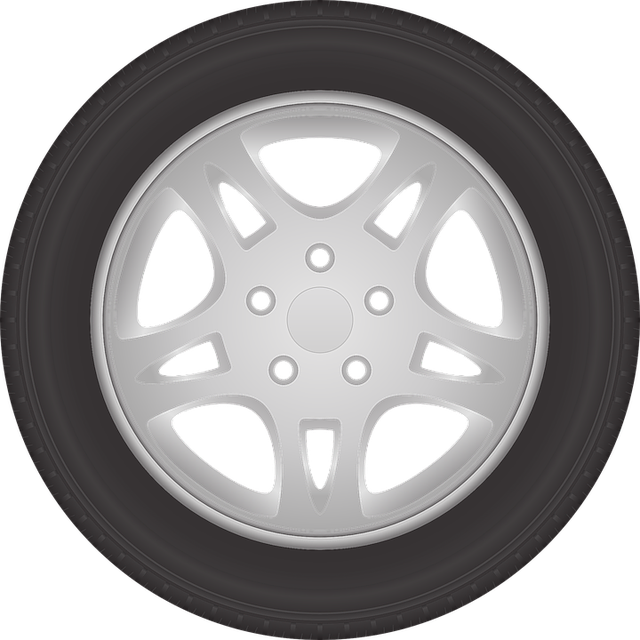Looking to register your car in California? This comprehensive guide breaks down the process step-by-step. From gathering essential documents to ensuring vehicle identity through a dvr (DMV) VIN verifier, we cover everything you need to know. Understand eligibility requirements, submit applications, and pay fees with ease. By following these clear instructions, registering your car in California becomes a smooth, efficient experience.
- Prepare Necessary Documents for Car Registration
- Verify Vehicle Identity with DMV and VIN
- Meet Eligibility Requirements for California Car Registration
- Submit Application and Pay Fees to DMV
- Receive Confirmation and Register Your Vehicle
Prepare Necessary Documents for Car Registration

Before you begin the registration process, make sure you have all the required documents ready. The California Department of Motor Vehicles (DMV) requires a comprehensive set of papers to ensure a smooth and accurate car registration. One crucial document is the Vehicle Identification Number (VIN) verifier, which can be obtained through a reliable mobile vin verifier or inspection service. This verification process plays a vital role in confirming the vehicle’s history and authenticity.
Additionally, you’ll need to provide essential paperwork like the title or bill of sale from the previous owner, current insurance proof, and a valid driver’s license. For convenience, many individuals opt for a mobile vin verification service, which allows them to complete these steps efficiently without visiting any physical locations. This modern approach streamlines the registration process, especially in regions with bustling lifestyles.
Verify Vehicle Identity with DMV and VIN

Before proceeding with registration, it’s crucial to verify the vehicle’s identity using a DMV VIN verifier and confirm its authenticity. The Vehicle Identification Number (VIN) is a unique code that acts as a fingerprint for your car. A reliable mobile VIN verifier or a vin inspection can help you check the vehicle’s history, ensuring it matches the make, model, and year specified by the manufacturer.
This step is essential to prevent fraud and ensure you’re registering a legitimate vehicle. By cross-referencing the provided VIN with official records, you gain peace of mind knowing that the car has not been reported stolen or had any significant damage in its past. It’s recommended to utilize approved tools like mobile vin verifiers for this process, as they offer convenient and accurate verification during your interaction with the California DMV.
Meet Eligibility Requirements for California Car Registration

Before you begin the registration process, it’s crucial to meet the eligibility requirements set by the California Department of Motor Vehicles (DMV). To register your car in California, your vehicle must be properly insured and meet safety standards. Additionally, you’ll need to provide proof of ownership, often facilitated through a DMV vin verifier, ensuring the vehicle’s unique Vehicle Identification Number (VIN) is accurately captured.
One convenient method to verify your car’s VIN is through a mobile vin verification service. This allows for a swift and efficient initial step in the registration process. Ensure your car’s documentation is up-to-date and accurate to streamline your interaction with the DMV, including any required mobile vin inspection documents that confirm your vehicle’s identity and condition.
Submit Application and Pay Fees to DMV

To register your car in California, the next step after gathering all necessary documents is to submit an application and pay the required fees at the Department of Motor Vehicles (DMV). This process can be completed online or in-person. When submitting your application, ensure you include accurate and up-to-date information about your vehicle, such as its make, model, year, and current mileage. Additionally, provide a valid identification document like a driver’s license or passport.
For a seamless registration experience, consider utilizing the DMV’s online services for submitting applications and paying fees. If you prefer a more traditional approach, visit a local DMV office. During your visit, be prepared to present your vehicle’s title, proof of insurance, and any other required documents. Also, don’t forget to arrange for a mobile vin verification or vin inspection if needed, as the DMV may require this step to ensure the vehicle’s authenticity and history.
Receive Confirmation and Register Your Vehicle

After verifying your vehicle’s details through a DMV VIN verifier or using a mobile VIN inspector, the next step is to receive confirmation and officially register your car in California. This process involves submitting all necessary documents to the California Department of Motor Vehicles (DMV). Start by completing the Application for Title and Registration form, which can be obtained from any DMV field office or downloaded from their official website.
Make sure to include a copy of your vehicle’s registration from the previous state, proof of insurance, and a valid driver’s license. Additionally, you’ll need to pay the required fees, which vary based on the type of vehicle and other factors. Once all documents are in order, submit them along with any necessary fees at your local DMV office, or consider using their online services for a more convenient mobile VIN verification and registration process.
Registering a car in California is a straightforward process that requires preparation, verification, and compliance with state regulations. By ensuring you have all the necessary documents, verifying your vehicle’s identity using the DMV and VIN verifier, and meeting the eligibility criteria, you can efficiently complete the registration process. Remember to submit a completed application along with the required fees to the DMV, and once approved, receive your confirmation and legally register your vehicle in California.
